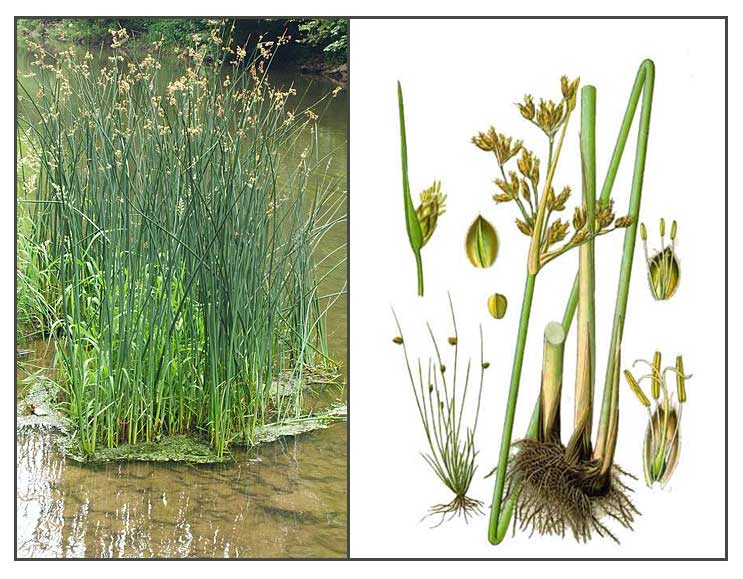
Family • Cyperaceae
Tiker
Schoenoplectus lacustris (L.) Palla
BULRUSH
| Scientific names | Common names |
| Eleogiton duvalii Fourr. | Tiker (Ilk.) |
| Eleogiton lacustris (L.) Fourr. | Common club-rush (Engl.) |
| Heleophylax lacustris (L.) Schinz. & Thell. | Common tule (Engl.) |
| Hymenochaeta lacustris (L.) Nakai | Matting rush (Engl.) |
| Hymenochaeta makinoi Nakai | True bulrush (Engl.) |
| Schoenoplectus lacutris (L.) Palla | |
| Schoenus lacutris (L.) Bernh. | |
| Scirpus andrzejowscii Besser ex. Schult. | |
| Scirpus barbulatus Kunth | |
| Scirpus brayi Hoppe ex Roem. & Schult. | |
| Scirpus ciliatus Steud. | |
| Scirpus custoris Hegetschw | |
| Scirpus drepanensis Lojac. | |
| Scirpus holoschoenus Oeder | |
| Scirpus janii Besser ex Schult. | |
| Scirpus jardinei Steud. & Jard. | |
| Scirpus lacustris L. | |
| Scirpus lithuanicus Besser ex Schult. | |
| Scirpus macrophyllus Besser ex Schult. | |
| Scirpus medius Gray | |
| Scirpus meyenii Nees | |
| Scirpus orgyalis Raf. | |
| Scirpus turgidus Thuill. | |
| Scirpus wolfgangii Besser ex Schult. | |
| Scirpus lacustris L. is a synonym of Schoenoplectus lacustris (L.) Palla The Plant List | |
| Schoenoplectus lacustris (L.) Palla is an accepted name The Plant List | |
Botany Distribution Constituents Availability |
© Godofredo U. Stuart Jr., M.D. / StuartXchange |
Updated July 2018 / October 2016
May 2011
![]()
 |
| IMAGE SOURCE: Photograph / Schoenoplectus lacustris, Hohenloher Land, Germany / Bernd Haynold / File:Schoenoplectus lacustris 260605.jpg / 26 July 2005/ CC BY 2.5 / click on image to go to source page / Wikipedia |
| OTHER IMAGE SOURCE: Scirpus lacustris Linn. / Otto Wilhelm Thomé: Flora von Deutschland, Österreich und der Schweiz (1885) - Permission granted to use under GFDL by Kurt Stueber / Modifications by G. Stuart / alterVISTA |
Additional
Sources and Suggested Readings |
| It is not uncommon for links on studies/sources to change. Copying and pasting the information on the search window or using the DOI (if available) will often redirect to the new link page. |
• |
 |

 Etymology
Etymology